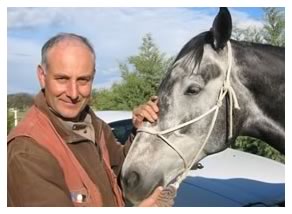
Home › Girth Pain & Dysfunction › Causes
Causes of Girth Pain and Paraesthesia
It is highly likely that the most common cause of this spinal and rib problem is birth trauma. The body of foals, and especially their chests, are severely compressed during their passage through their mother’s pelvis. Recent research into birth trauma in foals revealed a 5% incidence of broken ribs, and a 20% incidence of rib cage trauma in newborn foals. A small portion of foals actually die from trauma to their chest. The most affected area corresponds with the highest part of the wither and overlaps with that of the girth pain and paraesthesia described here. Symptoms of girth pain and paraesthesia are commonly found on examining young foals, weanlings and yearlings that have never seen a saddle or girth.
Horses falling over backwards often damage their wither, including the vertebral processes, bodies and vertebral facet joints. Evidence consistent with the latter is found in around 10% of thoroughbreds appearing to suffer girth pain, paraesthesia and associated vertebral motion dysfunction.
How do horses become girthy, sometimes seemingly overnight?
It appears that in many horses girth irritability or pain is there but is low grade. Most, I believe learn to live with it. When you’re broken in, you get a saddle and girth on, and it’s a bit uncomfortable, but it is made clear that you’re not allowed to complain by biting or carrying on, so you don’t – well not unless you’ve got “attitude” and you have to let every one know about it. The horse, with considerable discomfort or pain, has to either put up with the problem, or do things to evade the pain. Behaviour such as biting at the handler or girth, or pigrooting or bucking, can develop. Pain also creates a heightened sense of anxiety or fear, which further feeds the development of abnormal and undesirable behaviour. Our reactions to the undesirable behaviour may actually encourage them, rather than help diminish them.
Uncomfortable girths and saddles are likely to irritate underlying girth pain or paraesthesia and make it less tolerable for the horse.
If the girth pain and paraesthesia is moderate the horse may learn to live with the discomfort but often we will still have other obvious signs of girth pain syndrome remaining – often trouble with one canter lead, anxiety/fear when away from home, hoof unevenness and so on.
When a horse goes over backwards, falls on its shoulder, or trips badly with a saddle on, or is girthed up roughly, the problem that perhaps started at birth, can be irritated. As a result a good horse can quickly or gradually turn sour, something we have all seen time and time again.
